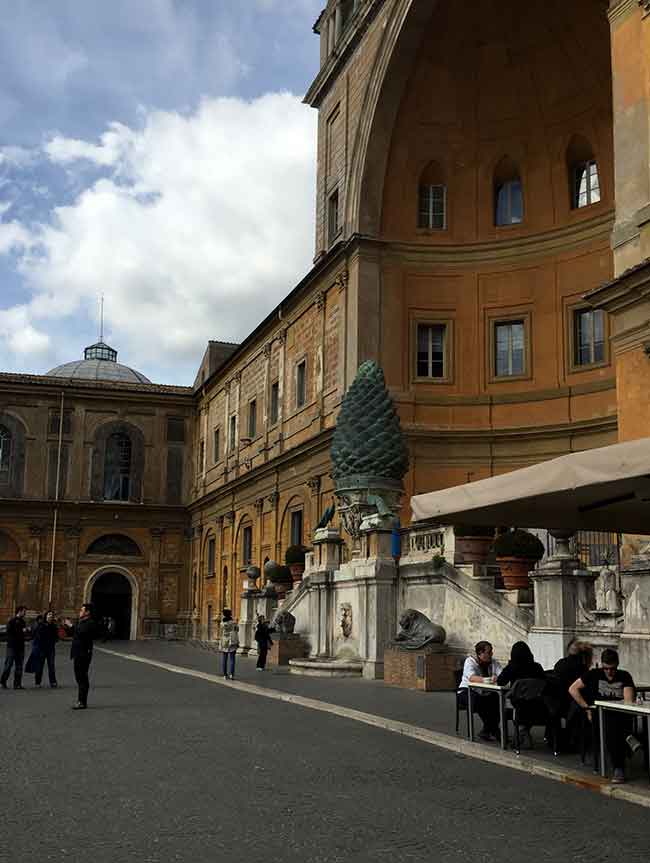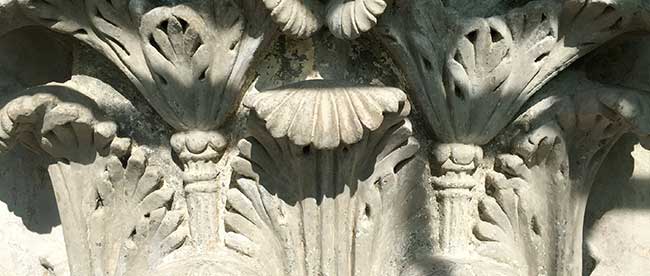Vatican City, both the smallest sovereign state in the world and the administrative headquarters of its largest Christian Church, is also a United Nations World Heritage site. Among the series of architectural restoration projects planned or under way there, few are more significant than that of the Cortile del Belvedere, or Belvedere Courtyard, where a team of Notre Dame faculty and graduate students from the University’s School of Architecture and Department of Physics have begun an unprecedented study.
Led by Krupali Uplekar Krusche, associate professor of architecture, and director of Notre Dame’s D.H.A.R.M.A. (Digital Historical Architectural Research and Material Analysis) team, the Notre Dame team is documenting the 16th century courtyard’s structures and statues with Leica 3-D high-speed, long-range, laser scanners and taking samples from the materials with which they were constructed.



“We’ll be mapping the courtyard, documenting specific areas where aging has taken place, and providing a timeline, while Professor Wiescher from the physics department and his nuclear science lab identify and test samples of physical materials from the courtyard,” Krusche said, “as a result we’ll supply the Vatican with a three-dimensional understanding of the courtyard which will help determine which pieces need to be restored and which need to be kept intact.”
"The DHARMA team's advanced documentation of the Belvedere Courtyard is of great value in ensuring the protection and preservation of a notable architectural feature of the Vatican..."
“The DHARMA team’s advanced documentation of the Belvedere Courtyard is of great value in ensuring the protection and preservation of a notable architectural feature of the Vatican,” said Michael Lykoudis, Francis and Kathleen Rooney Dean of Architecture. “It also serves as a wonderful teaching tool for Notre Dame students who are able to experience firsthand this incredible site as they gain a unique understanding of the structure as well as the design principles that underlie its creation.”
Pope Julius II began construction of the Belvedere Courtyard in 1506, assigning task to the architect Donato Bramante. Now a universally celebrated example of the High Renaissance, the courtyard was designed to connect the Vatican Palace beside St. Peter’s Basilica with the Villa Belvedere, a palace built by Julius’ predecessor, Pope Innocent VIII on some nearby high ground to access breezes during the oppressive heat of Roman summers. The courtyard was intended both to enhance the grandeur of both palaces and as a site to display the collection of ancient statues accumulated by Pope Julius during his pre-papal career. Bramante included in his design a series of interconnected terraces along which now are situated the Vatican Museums and the Vatican Library.

The colorful history of the Cortile del Belvedere includes its use by Julius’ successor Pope Leo X, who kept a menagerie featuring his prized elephant, Hanno, whose remains are buried there. The courtyard, from which all of Vatican City may be seen, remains today one the iconic architectural works of Rome.
Since 2007, Krusche and the DHARMA team have conducted similar groundbreaking work at other World Heritage sites, including the Taj Mahal and the Roman Forum.